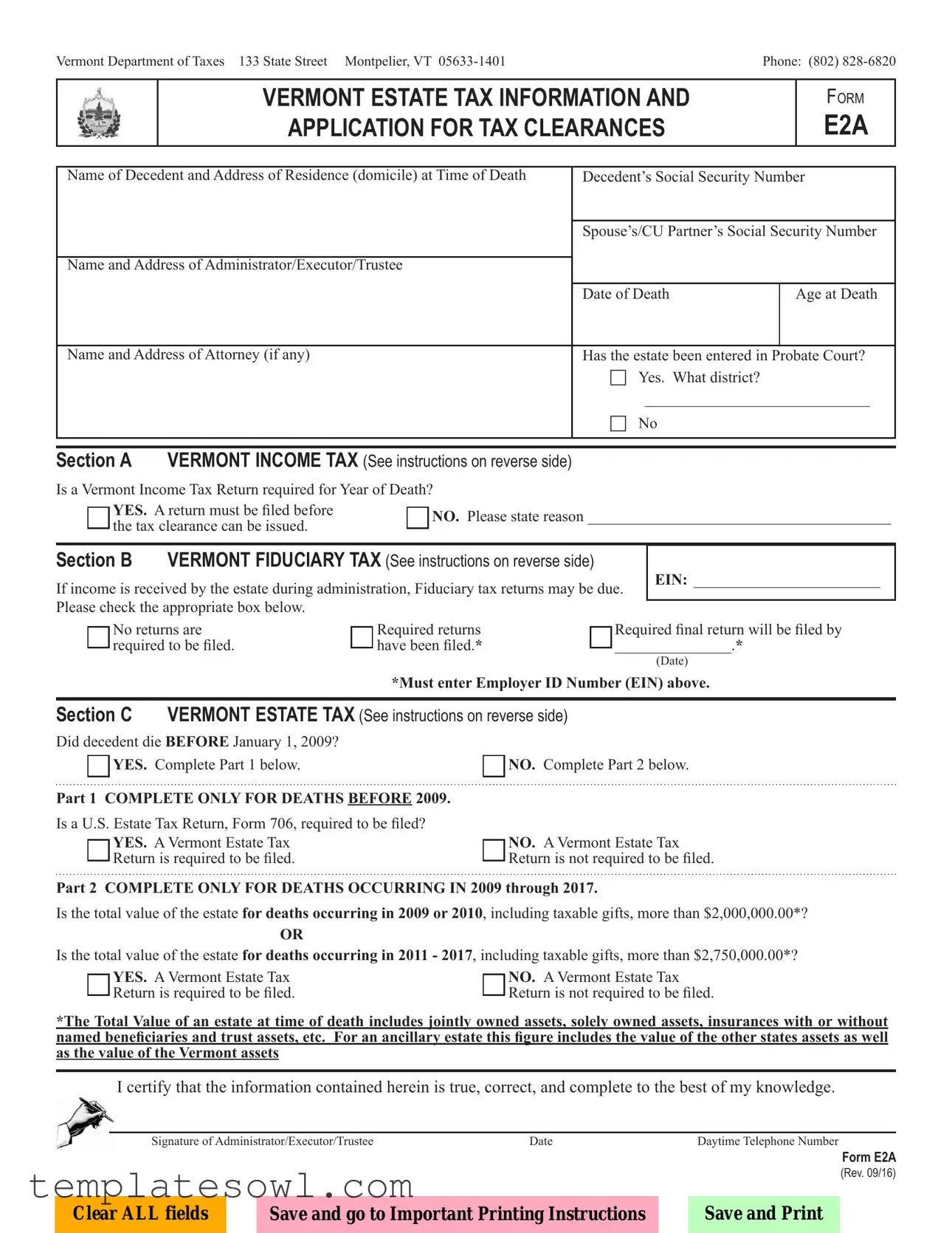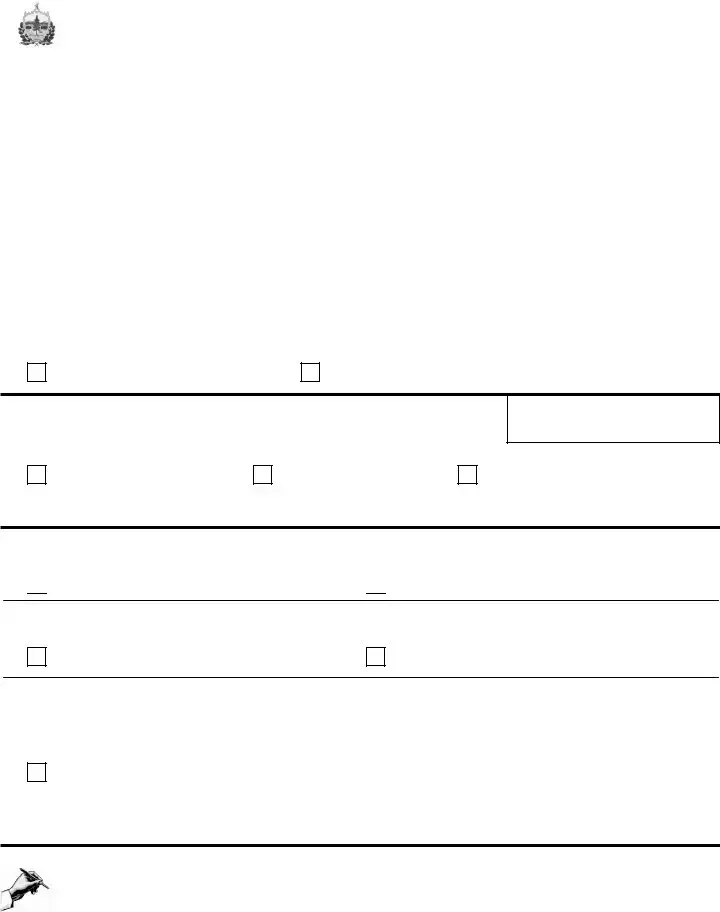What is the purpose of the E2A form?
The E2A form is used to apply for tax clearances related to an estate in Vermont. It serves as a declaration of the decedent’s estate tax obligations, and it helps the state ensure that all necessary tax returns have been filed and taxes paid before the estate can be settled. Tax clearances can be crucial for administering the estate and avoiding future liabilities.
Who should complete the E2A form?
The form should be completed by the administrator, executor, or trustee of the decedent's estate. This individual is responsible for managing the estate’s affairs, which includes addressing any tax matters. If there is an attorney involved, their information should also be provided on the form.
What information is required on the E2A form?
Essential information includes the name and address of the decedent, their Social Security number, and the date of death. You will also need to provide details about the administrator or executor, including their contact information. Additionally, the form asks about any probate court involvement and whether income tax or fiduciary tax returns have been filed or are required.
Is a Vermont Income Tax Return always required when completing the E2A form?
No, a Vermont Income Tax Return is only required if the decedent’s estate needs one for the year of death. If applicable, the return must be filed before the tax clearance can be issued. If no return is needed, you must provide a reason on the form.
What are the estate tax filing requirements under the E2A form?
The estate tax requirements depend on the date of the decedent's death and the total value of the estate. If the decedent died before January 1, 2009, a U.S. Estate Tax Return (Form 706) is typically necessary. For deaths between 2009 and 2017, you need to assess the total estate value. If it surpasses certain thresholds, a Vermont Estate Tax Return must be filed.
What does it mean if the estate is not required to file a Vermont Estate Tax Return?
If the total value of the estate falls below the required thresholds, a Vermont Estate Tax Return is not needed. However, all assets, including jointly owned property and certain trust assets, must be included in the valuation to determine if filing is necessary.
How can I submit the E2A form?
The completed E2A form should be submitted to the Vermont Department of Taxes at the address provided on the form. It is advisable to keep a copy for your records. If you have questions or need further assistance, you can contact the department directly at the provided phone number.





